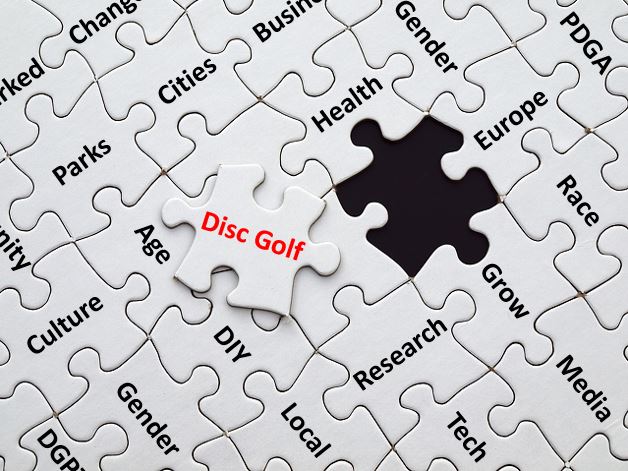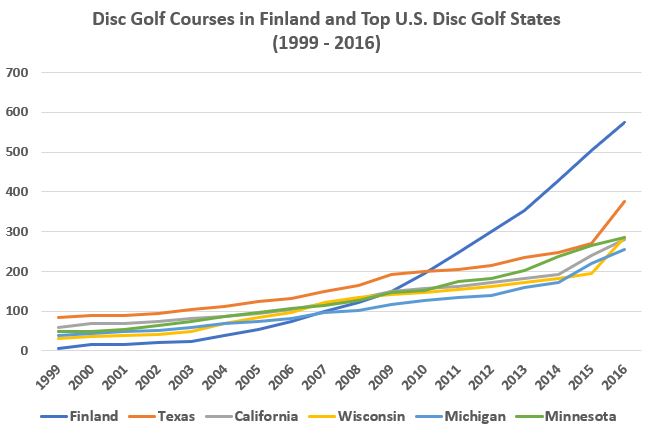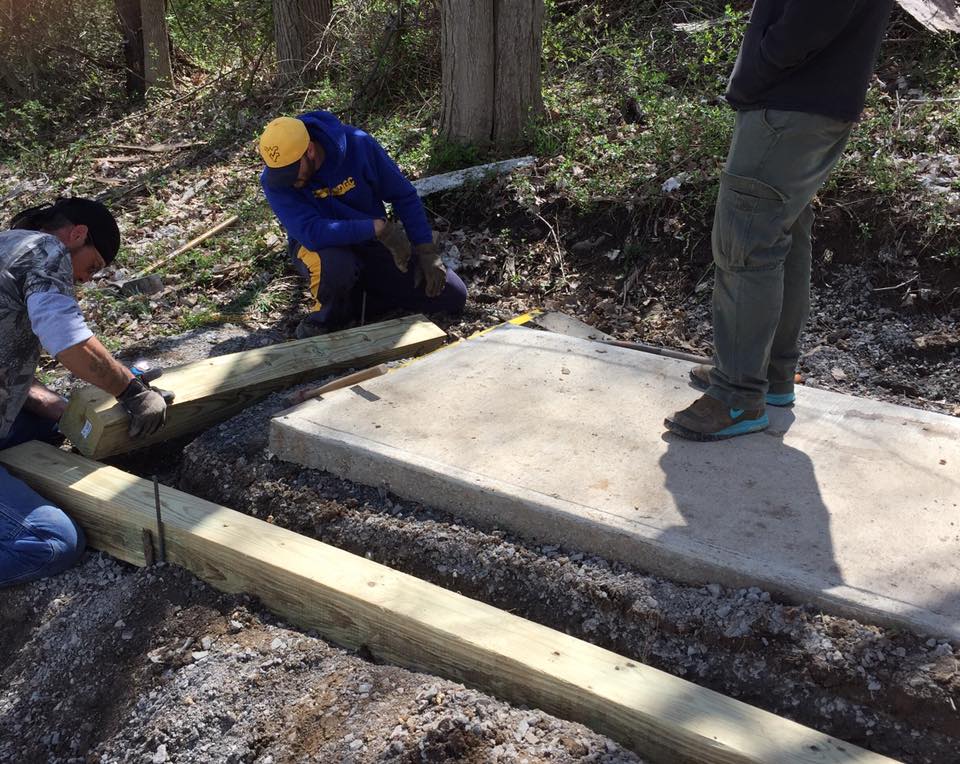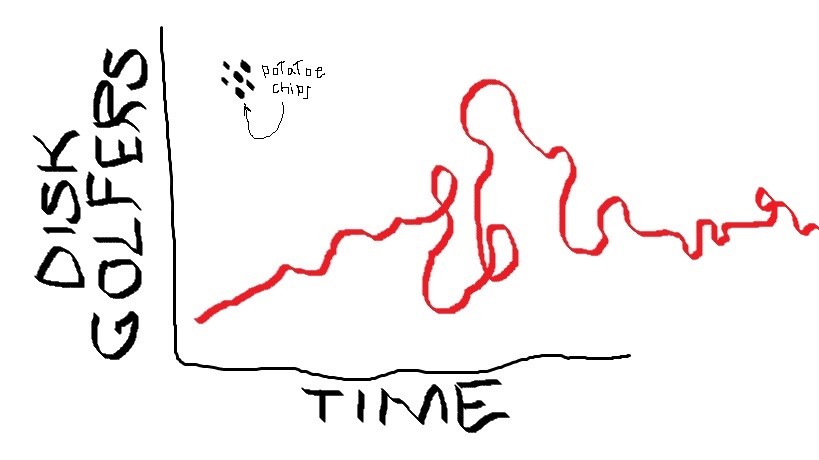By Josh Woods ~

One of the questions you learn to answer in graduate school is, “Who cares?”
As you work through your research ideas, your teachers drum this question into you. For instance, after presenting your thesis proposal, someone in the audience might chirp: “Your project sounds interesting, but I’m not sure it passes the who-cares test.”
That’s as close as it gets to smack talk in academia.
As devilish as the question may be, it’s almost always worth answering. After all, if your research isn’t relevant to anyone, why carry it out?
As discussed in a previous post, I recently completed a study of the disc golfer population in the United States. I had a few basic questions: How many people play disc golf? Who plays? And why do some groups play more than others?
In future posts, I’ll outline my answers to these questions. But for now, I should begin with the who-cares question. Why should anyone care about disc golf research?
Here are three answers:
Disc golf appears to be growing quickly
Born during the countercultural movements of the 1960s, disc golf grew slowly for decades in small regional pockets scattered throughout the United States (1). Then, in the early twenty-first century, things began to change.
The most reliable indicators of disc golf activity in the United States—PDGA members, PDGA-sanctioned events and disc golf courses—increased significantly over the last two decades.
Disc golf is thriving in other countries as well. PDGA Europe was established as a committee in 2006, but quickly evolved into a self-governing entity. An official PDGA office was opened in the Netherlands in 2016. Throughout the 2010s, the number of PDGA events, members and courses grew faster in some European countries such as Finland and Estonia than in the United States.

The sport also gained prominence in media. Over the last two decades, local newspaper coverage of disc golf increased faster than coverage of ninety-two other sports.
Like many emerging sports communities, disc golf benefited from the rise of social media in the 2000s. The changing media landscape facilitated innovative forms of disc golf organization and allowed a range of upstart media, such as YouTube channels, online news sources, podcasts and blogs, to cover all aspects of the sport.
Since the earliest disc golf groups emerged on Facebook in 2007, the number of active groups increased uniformly between 2008 and 2015 and stabilized in 2016 with a total of 3,471 groups (2).
Big changes may come
The second reason to care about disc golf research involves the potential social and economic consequences of the sport’s growth. If optimistic predictions hold, the 2020s will mark a major shift in U.S. recreation. The emergence of disc golf as a mainstream sport would lead to new manufacturing and tourism industries in the U.S. and northern Europe.
The utilization of public parks, where roughly 90 percent of disc golf courses are located, would increase tremendously (3).
Judging from research on other sports and recreational activities, an increase in the disc golfer population would likely have positive effects on community health and wellbeing (4). During a typical 18-hole round, per a study by Menickelli and colleagues, disc golfers walk an average of 5,613 steps or about three miles (5).
The sport may also attract participants who are less interested in traditional sports like football, basketball and baseball (6). Disc golf, in other words, may be a remedy for inactive lifestyles.
Compared to ball golf courses, which utilize hazardous fertilizers and require seven times more land area, disc golf courses are environmentally friendly.
Some research has also shown that disc golfers would be willing to play at courses built in underutilized urban spaces, such utility corridors, urban washes and abandoned factories, which would alleviate the problems associated with deindustrialization, while making disc golf available to the diverse communities of large urban centers (7).
A proliferation of disc golf clubs may also strengthen community ties, promote social capital and encourage volunteerism (8). Most disc golf facilities and clubs have been created by volunteers and funded through local donations.

Based on a 2018 survey of 158 experienced disc golf course designers, 65 percent of them had never been paid for their design work, and 74 percent had never received payment for their installation and construction jobs.
Although valiant efforts are being made to get disc golf into schools, it generally receives little support from established sports institutions. Disc golf in the U.S. has been built on a do-it-yourself, not-for-profit model. The sport’s physical and social infrastructure represents an ongoing community development project that has been paid for and developed in large part by grassroots clubs and other volunteer groups.
Disc golf may not save our crumbling civil society, but it certainly may help it.
What we don’t know could hurt us
The third reason to care about disc golf research is straightforward: there’s not much of it. Despite its potential benefits, the disc golf community has received almost no attention from social scientists.
While the PDGA collects extensive demographic information on its membership, disc golf has never appeared in a nationally representative sports participation survey.
No one knows how many disc golfers exist outside the PDGA. Available guesswork on the population size has produced widely varying estimates, from 90,000 to two million. We simply do not know how many people play, what this population looks like, or what motivates participation.

Consider, for instance, the number of studies on disc golf available through JSTOR, one of the largest digital libraries of academic texts in the world. In summer 2018, I searched JSTOR for articles and books with the word disc golf in the titles. The search returned zero results. When I used the same search procedure for other sports, the results were quite different. JSTOR contained numerous studies with the terms baseball (1,976), football (1,488), and basketball (527) in the titles.
Even lesser-known sports and activities returned some results. For example, badminton (24), roller derby (6) and eSports (2) did okay in comparison. While ignoring disc golf, scholars produced 119 studies on knitting.
More research is needed to provide the disc golf community, institutional stakeholders and scholars with rudimentary facts about this potentially transformative social movement.
~~~
If you’d like to support disc golf research, like Parked on Facebook, and share us with friends.
~~~
References
*For full reference information, please email your request to joshwoodsj1@gmail.com.
(1) Palmeri and Kennedy 2015.
(2) Woods 2019.
(3) Oldakowski and Mcewen 2013.
(4) Maller et al. 2008; Maroko et al. 2009; Center for Disease Control 2001; Kahn et al. 2002; Crompton 2000.
(5) Menickelli et al. 2016.
(6) Vernegaard, Johansen and Haugen 2017.
(8) Perks 2007; Putnam, Leonardi and Nanetti 1994.
~~~
Parked is underwritten in part by a grant from the Professional Disc Golf Association.
~~~
This post draws from my article, “Using Social Media to Estimate the Size and Demographic Characteristics of Hard-to-Reach Sports Communities: The Case of Disc Golf,” published in 2019 by the International Journal of Sport Communication.

Great post. I only take issue with one thing: your assessment of smack-talk in academia. The “who cares” test is merely the first level. 😉
LikeLike
Ha! You’re probably right bubatl. Second and third level smack-talk in academia is less common, but it exists. Oh, yes it does.
LikeLike
Good article. One interesting part of disc golfs growth is the battle between old school purists and the inevitable rise of merchants seeking to cash in on the new market opportunities. There is plenty of room for both, but I’m betting that with a few exceptions, the market will stay an inch deep and a mile wide for the foreseeable future. Lastly, I’ll say that the sport does a poor job collectively of attracting media that isn’t already baked in. Hope this changes.
LikeLike
Interesting thoughts mack50. I’d be curious to hear more about “the battle” you mentioned. I generally agree with your market projections. It’s a tough go in the dg industry. But I think disc golf could grow substantially without market success. Like youth soccer in the 1980s-90s, a sport community can grow consistently without financial success. I like the slogan ‘grow the sport’, but when people use it, I always wonder if they mean ‘grow the social movement / community / participation,’ or ‘grow the business / brand / fanbase.’ Like you mentioned, plenty of room for both.
LikeLike
Well, there has been a sizable shift in demographics, as evidenced by the PDGA’s research and simple polling. That means movement away from “white guys in their 20’s and 30’s”, which was the overwhelming segment for years. So, the old battle used to be in keeping the grassroots aspects of the sport intact while the merchants sought ways to capitalize on an emerging market. The newer players have no ties to the past and are more accepting of plunking down cash for discs, tourneys, and related swag. That will ultimately win out. There’s no real money in disc sales without volume, so tourneys and related events are crucial, and generally more profitable. That said, given the limited number of courses, the number of players can actually work against you with respect to that very access. Everyone says “grow the sport”, then grumble when you have a wait on every tee because the course is full. I am amazed how much even non sanctioned events cost nowadays. Not sure I like it, but that’s pushing against the ocean, so to speak.
LikeLike
Yeah, disc golf seems like an affordable activity, but once you get into the gear, and start playing tournaments, it can be pretty pricey.
LikeLike